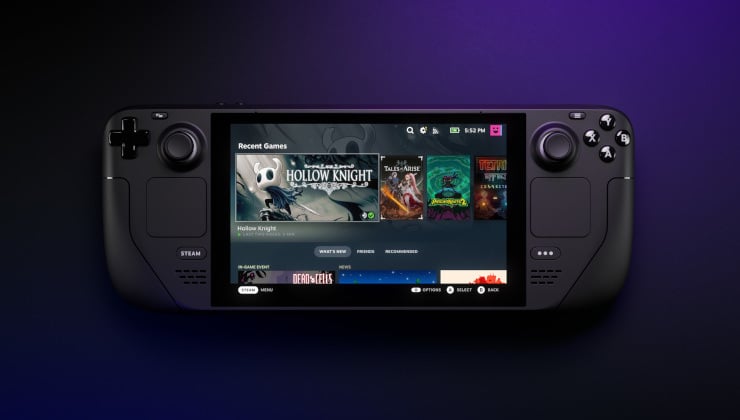- cross-posted to:
- [email protected]
- [email protected]
- cross-posted to:
- [email protected]
- [email protected]
deleted by creator
That’s not because of the software, though. The Deck has a custom APU that caps at 15W TDP. Presumably your laptop has something far more power hungry. If you cap your laptop at 15W it’ll probably last longer than a Deck, assuming your battery is not damaged.
From the notes this is a change to how the controller is handled when the framerate is limited, so this probably wouldn’t do much for you.
I do wonder if you can feel any additional lag at 30fps or if the polling rate was just complete overkill for that scenario, though, because 6% seems like a lot, and there are reasons why you’d want to read the controller faster than the refresh rate of the screen.
deleted by creator
Okay, but unless you are actively playing a game on a shoestring power budget with a wired controller this isn’t even conceptually applicable. And the reason your Linux laptop is power hungry is almost definitely not that it’s spending too much power making your controller responsive.
I’d argue the Deck doesn’t even fix that particularly well. People keep praising its suspend functionality compared to other devices, but the truth is it isn’t very power efficient on sleep. It won’t turn on in your bag for mysterious reasons only known to Intel and Windows, but it also won’t wake up from a month in sleep with an untouched battery the way a Switch does.
deleted by creator
Well… yeah, this is a thread about this patch. And the change in question is listed under “Steam Input”, so I have to assume it’s the polling rate of the built-in controller.
I’m not sure if that change is built into Steam Input on the standalone Linux version of Steam, but it’s almost certainly not the issue your laptop has with battery life, even when gaming.
deleted by creator
I think it’s a bit of a best case scenario, where they’re using a very old game that will run with the lowest allowed 5W TDP with room to spare when locked to 30fps. At that point running the game probably burns so little power you can notice optimizations to stuff like wifi or the controllers. I bet the screen burns more power than the APU in that scenario.
If you’re going full blast on a modern game at 30 the power save in percentage is probably trivial, so this seems like a weird combination of factors. But hey, it’s a handheld, so every bit helps. Like I said above I just don’t know if you’d feel the latency difference in some games where the controller handling is not tied to the display framerate, but I don’t know how many PC ports there are where that’d be a thing.
it also won’t wake up from a month in sleep with an untouched battery the way a Switch does.
Any time I left my dock unplugged (after cleaning or whatever), next time I wanted to use the switch or joycons for something I found the battery drained :P
Not to say it isn’t better, or even way better, but calling it untouched seems a bit too exaggerated.
The Switch does do stuff on sleep, so maybe it isn’t the best example. Older Nintendo handhelds were bizarrely resilient, though.
Still, I’ve never pulled the deck from being left on sleep in its case and found it charged. Which makes sense, it’s a x86 PC. All I’m saying is its sleep mode is somewhat more reliable than most Windows x86 devices, but it’s not on par with ARM devices meant for mobile use from the ground up. You can only do so much at the OS level.
The WiFi gets confused after suspend as well. After like 5 times I have to force a reboot because the connection keeps resetting.
DXVK, vkd3d-proton, MangoHud, and libstrangle all offer ways to limit a game’s frame rate, and some games have their own setting for it. I don’t know how their efficiency compares with whatever approach SteamOS is using, but you could experiment.




